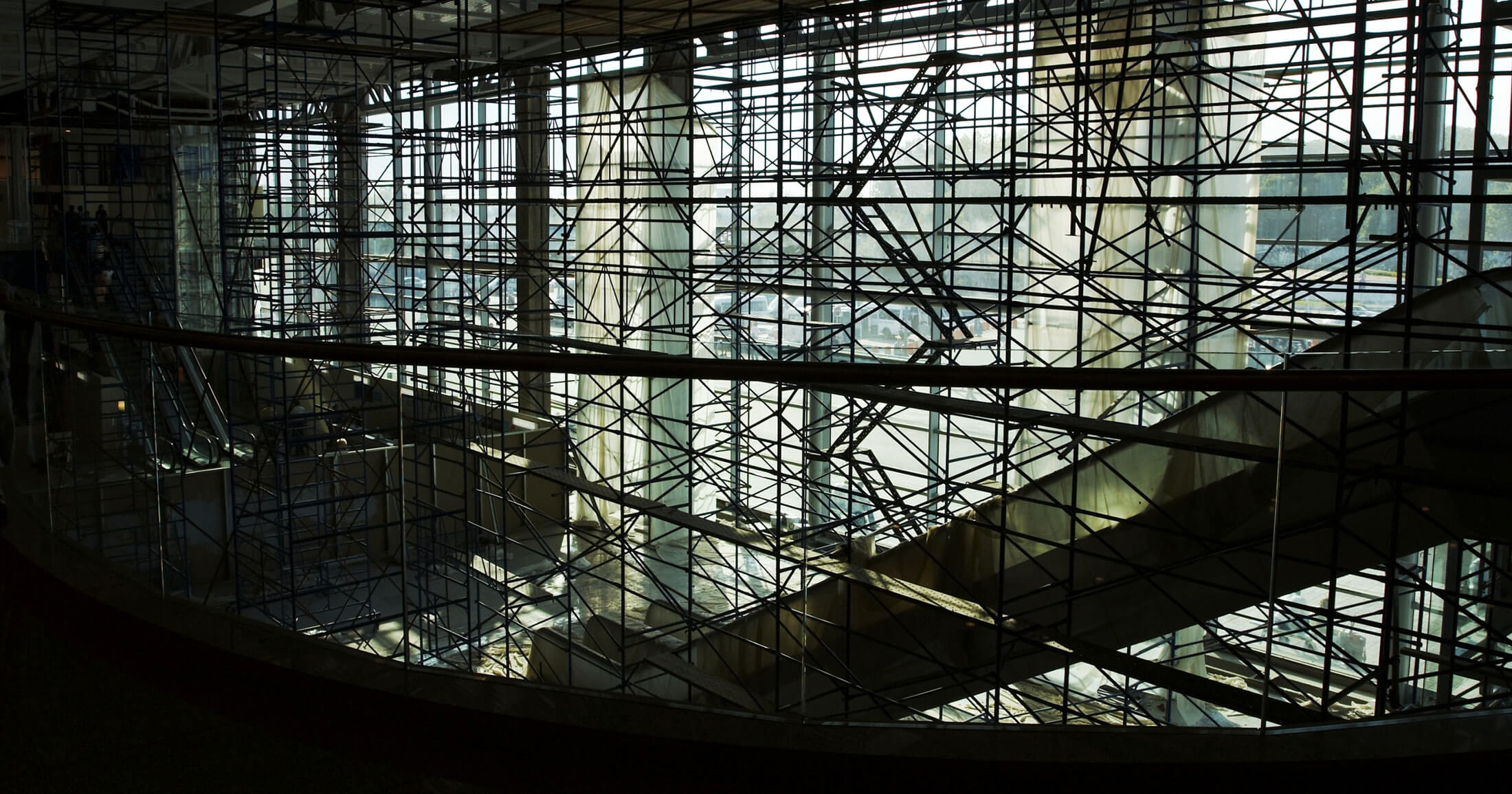
Category Archives: Architecture
New Storage Building at Fernwood State Forest
The Fernwood State Forest storage building is almost complete, just waiting on final inspections and cleaning. The building has four storage bays with overhead doors, one of which has overhead doors on both the front and rear walls to allow vehicles to pull into the building to be loaded and unloaded out of the weather. On the east side of the building is a rainwater harvesting system that stores water from downspout runoff in an underground tank for washing vehicles outside. The Foresters should be able to start moving materials and equipment into the building in the next few months.
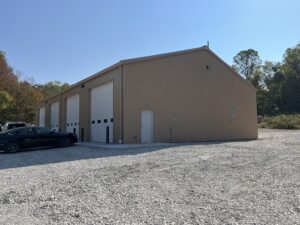
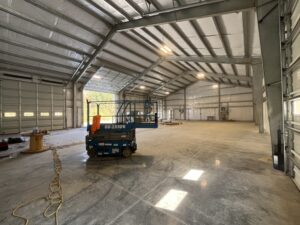
Exterior and interior views of the new storage building, which is almost complete.
Ohio’s First Black Church Nearing Renovation Completion
The Macedonia Missionary Baptist Church in South Point had some state grant money redirected to another project, so some items not essential to the occupancy permit had to be postponed. These included items such as the new wood floor, installing the original tin ceiling and the replacement pieces, new window and door casings, reinstalling the wood wall base, and interior painting. The exterior painted wood handicap ramp has also been swapped for a premanufactured aluminum ramp. The owners are hoping to raise enough private funds to finish the remaining work this year.
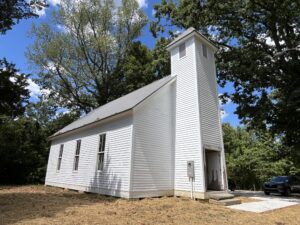
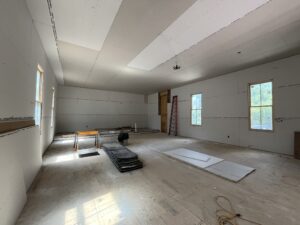
Left: View of the northeast corner of the church, which is still awaiting delivery of the new custom front doors. Right: Interior looking northwest toward the location of the new egress door, which will lead to the wheelchair ramp.
What Do We Do With All This Water?
When Intel decided to build a plant in Ohio, one of the reasons is the abundance of water. Apparently, data centers keep getting built here for the same reason. But it you are working on an old building with a basement, all that water can be a liability! At The Gardner House, Steller Construction finished installing the underpinning, new concrete slab floor, and exterior perimeter drain when a torrential downpour saturated the site. Rain came down so fast that the drainage system couldn’t get water out fast enough to prevent it from entering the basement. One solution is to add a drainage mat on top of the waterproofing to keep water off the exterior wall and direct it down to the drain pipe.
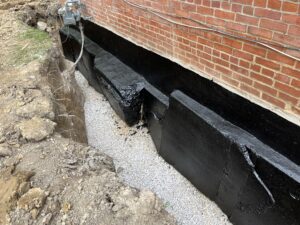
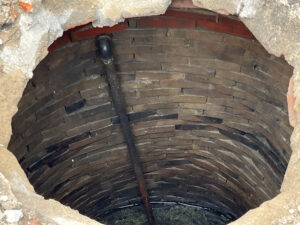
L: New fluid-applied waterproofing membrane that will be augmented with a drainage mat against the wall. R: An exiting cistern filled with water that we hope can be made into a historical exhibit that the pubic can view.
At Fernwood State Forest, the foundation drilling team working with E. Mullins Construction hit water that required the use of steel caissons to stabilize the shafts walls before the concrete could be poured. As an option, the driller could have eliminated caissons and used a slurry product known as “construction mud” (amongst other colorful names) in the shafts to keep the walls stable as concrete was being poured.
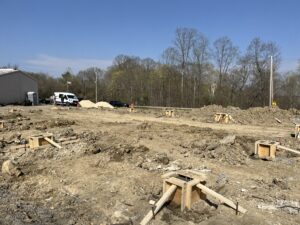
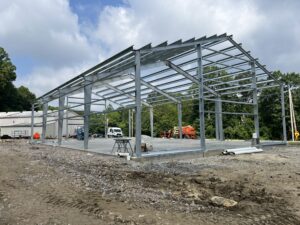
L: The Fernwood State Forest storage building in April 2025 with concrete piers curing in wood formwork. R: In July 2025, the floor slab in place and building framing up and anchored to pier foundations.
And finally, at Mount Zion Black Cultural Center in Athens, which is known to have a high water table, the constant rain made basement soil excavation a mud pit and caused the water table to rise. On the assumption that wet weather would only be more extreme in the future, HDC worked with the contractor Wolf Creek Contracting LLC to raise the level of the basement floor and enclosed all sump pits in waterproofed concrete enclosures. The basement will still be usable space, but design changes eliminate floor finishes and keep drywall a few inches off the floor behind the vinyl baseboard to minimize water damage in the future.
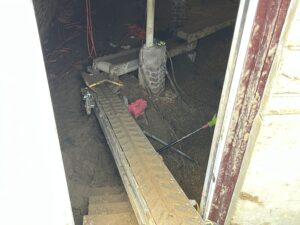
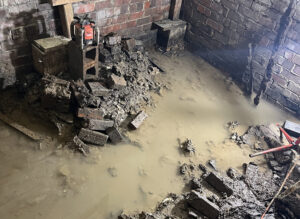
L: Wolf Creek Contracting rigged up a conveyor system to remove mud and bricks from the basement. R: Water in the basement after another heavy rain slowed construction progress.
Northcoast Behavioral Health Starts Construction
After multiple years on hold for funding and more, the renovation of the Northcoast Behavioral Health Dietary Building started in June! The general contractor is Feghali Brothers LLC out of Canfield, Ohio. Initial work consists of interior demolition to remove built-in freezers and coolers, asbestos abatement, quarry tile removal, and some exterior siding/fascia removal. The finished project will provide additional office space, including a meeting room and break room, and expand the existing restrooms to accommodate additional office workers. The expanded restrooms will be fully accessible and one of the office workers will finally stop sharing space with the server/IT closet!
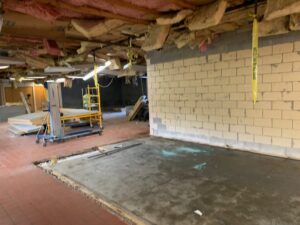
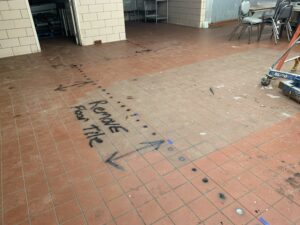
L: The floor under one of the removed coolers will be leveled and prepped to accept a new floor finish. R: Quarry tile marked for area to be removed.
Carol Stewart Village Starts Construction!
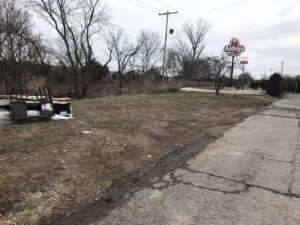
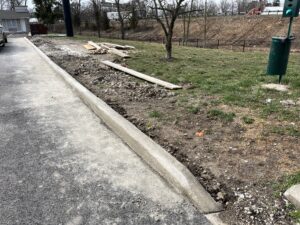
Left: View of west side looking north before construction. Right: View of west side looking south during construction with new curb and dog waste station.
HDC was commissioned by the City of Columbus to make improvements to Carol Stewart Village, a former 1980s hotel converted into housing for youths aged 18-24 who have aged out of the foster care system. Although the buildings had been renovated since the 1980s, the site around the building had not. HDC’s project includes the replacement of 70 packaged terminal air conditioners, or PTACs, ductless, self-contained air conditioning units that heat and cool small areas such as motel rooms and studio apartments. These units are also being anchored to prevent someone from breaking in from the outside. Sitework improvements include replacing crumbling concrete curbs and adding curbs where they do not exist now. The project also includes new dog waste disposal stations, which have already resulted in cleaner lawn areas. Another project repaved the parking lots. This project is just the beginning of improvements being made at Carol Stewart Village. Read about it in this Columbus Underground article.
HDC Welcomes Back Vivian Majtenyi!
The void left by the passing of Cathie Senter was thankfully filled by the return of Vivian Majtenyi in March. Vivian worked for HDC from 1999 (we were her first full-time architecture position) until 2013, when she left to take a break after working almost non-stop on our signature projects. During her 14 years at HDC, she traveled the country to complete facility assessments on Air Force Materiel Command installations and conduct research and documentation of historic buildings on navy bases. Vivian worked with Charissa Durst on the initial fieldwork at the Woodward Opera House through the rehabilitation of the second floor. She was also the project coordinator for both the addition to and renovation of the Lincoln Theatre and the addition and renovation of Stewart Elementary School. Vivian also obtained her architecture license in 2011. In the 10 years since she left HDC, her diverse work experience included the in-house design department of a construction firm, a large (over 650 employees) full-service A/E firm, and researching and writing historic architectural reports for cultural resources projects. Since HDC started new projects with the City of Columbus and State of Ohio this year, we are very happy to have Vivian back!
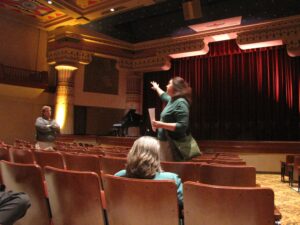

Left: Vivian leading a tour of the Lincoln Theatre. Right: Vivian’s celebratory cake upon passing the architecture license exam.
HDC Continues Successful 10-year Relationship with Kramer Engineers
HDC first worked with Kramer Engineers at Hocking College in 2013 on a feasibility study to renovate a former bookstore building for the School of Music. The team is currently working on a new storage building for the Ohio Department of Natural Resources in Fernwood State Forest. In the intervening years, major projects together include the Scioto Southland Recreation Center, Devon Pool Bath House and Mechanical Building, administration buildings in Clark County, and the John Bryan State Park Day Lodge. The relationship has also worked in both directions with HDC working as Kramer’s consultant on their projects for the Department of Rehabilitation and Correction and Department of Developmental Disabilities.
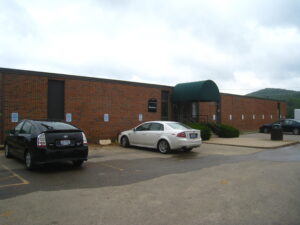
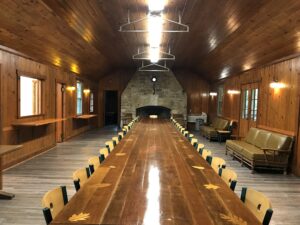
At left, the Hocking College Bookstore, which the team concluded was originally a modular building, and therefore not acoustically suited for a music school and at right, the interior of the John Bryan State Park day lodge, with built-in devices in the ceiling to lift the one-piece solid wood table.
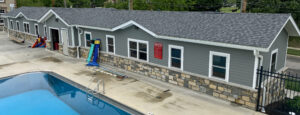
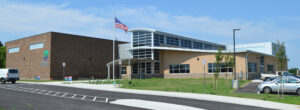 At left, the new Devon Pool Mechanical Building designed to match the Bath House and at right, the Scioto Southland Recreation Center with the renovated gymnasium left of the new entry and addition.
At left, the new Devon Pool Mechanical Building designed to match the Bath House and at right, the Scioto Southland Recreation Center with the renovated gymnasium left of the new entry and addition.
HDC Looks Back On and Forward to Black History Projects
In recognition of Juneteenth this month, HDC looks back on our projects that were associated with Black history.
In early 2002, HDC started a project to prepare a renovation master plan for the Gammon House in Springfield, Ohio. The Gammon House was built in 1850 by George Gammon, a Black abolitionist and is one of the few Underground Railroad sites in Ohio that was owned by a free person of color. HDC subsequently implemented the first phase of the renovation plan to stabilize the exterior.
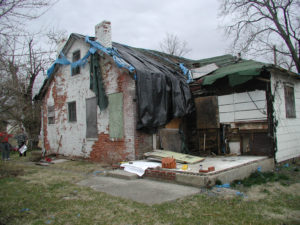
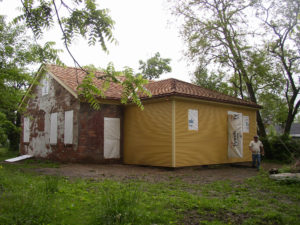
The Gammon House before (left) and during (right) stabilization in 2007.
In 2003, HDC was commissioned to prepare a feasibility study to renovate the Lincoln Theatre in Columbus into a modern performing arts center. The Lincoln Theatre, an Egyptian Revival theatre that opened in 1928, was funded by a Black developer, designed by a Black architect and built by a Black contractor. HDC’s study was used to secure funding from the City of Columbus and Franklin County, with the remaining funds raised by private donors. The grand re-opening occurred in 2009, and the project received awards from Columbus Landmarks Foundation, Heritage Ohio and the Ohio Historic Preservation Office.
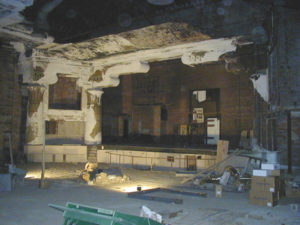
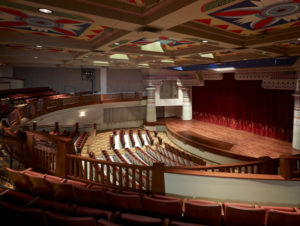
The interior of the theatre before (left) and after (right) rehabilitation in 2009.
In 2005, the City of Wichita commissioned HDC to prepare a redevelopment study for the Dunbar Theater, which was constructed in 1941 and named after Paul Lawrence Dunbar, the Black poet and author from Dayton, Ohio.
It was the focal point of a commercial and entertainment hub that served the McAdams neighborhood and surrounding neighborhoods that were predominantly African-American in origin until 1963, when the theater closed. Power CDC, a developer that specializes in inner-city Wichita, acquired the building in 2007 and restored the façade and marquee in 2012-2014.
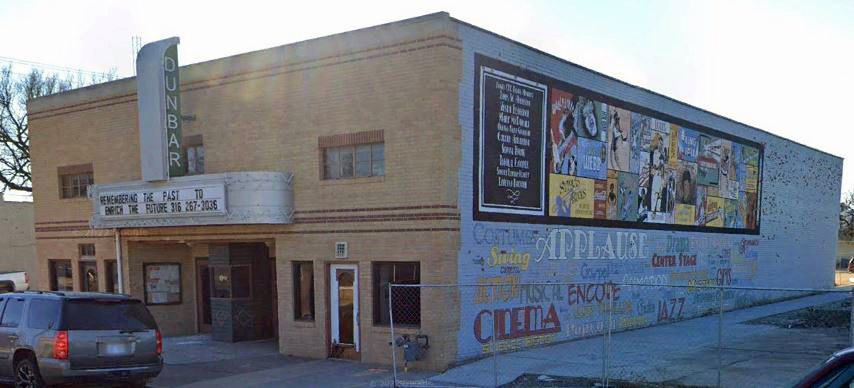
The Dunbar Theatre continues to be a work in progress.
In 2007, HDC prepared a Historic Structure Report and implemented the stabilization and exterior rehabilitation of the Lathrop House, which was built c. 1850 by Lucian Lathrop, a prominent white abolitionist in Sylvania, Ohio. The house contains an Underground Railroad Museum in the new basement and HDC completed an update to the Historic Structure Report in 2021 to rehabilitate the interior of the house and make it accessible.
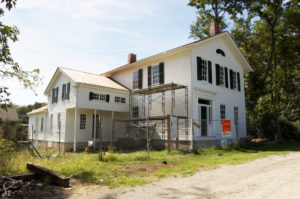
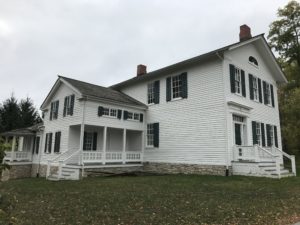 The Lathrop House before (left) and in 2021 (right).
The Lathrop House before (left) and in 2021 (right).
In 2017, HDC prepared a master plan to rehabilitate the Ozem Gardner House in Sharon Township near Worthington, Ohio, which was built in the 1840s by a local abolitionist, into offices for the Flint and Walnut Grove Cemeteries. The Gardner Family donated the original land to create the cemetery in 1821. The pandemic set the project back from its goal of opening in 2021. It is currently anticipated to be completed in 2022.
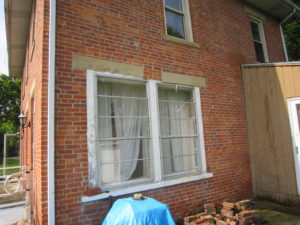
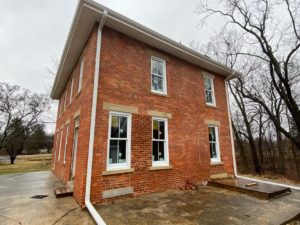
The Ozem Gardner House before (left) and after restoring the original masonry window openings (right).
In 2020, the City of Athens commissioned HDC to prepare a renovation master plan to convert the Mount Zion Baptist Church, built in 1904 by a Black congregation, into a community center and museum of African American Appalachian culture. The study was used to obtain a grant from the National Trust for Historic Preservation to start the rehabilitation process.
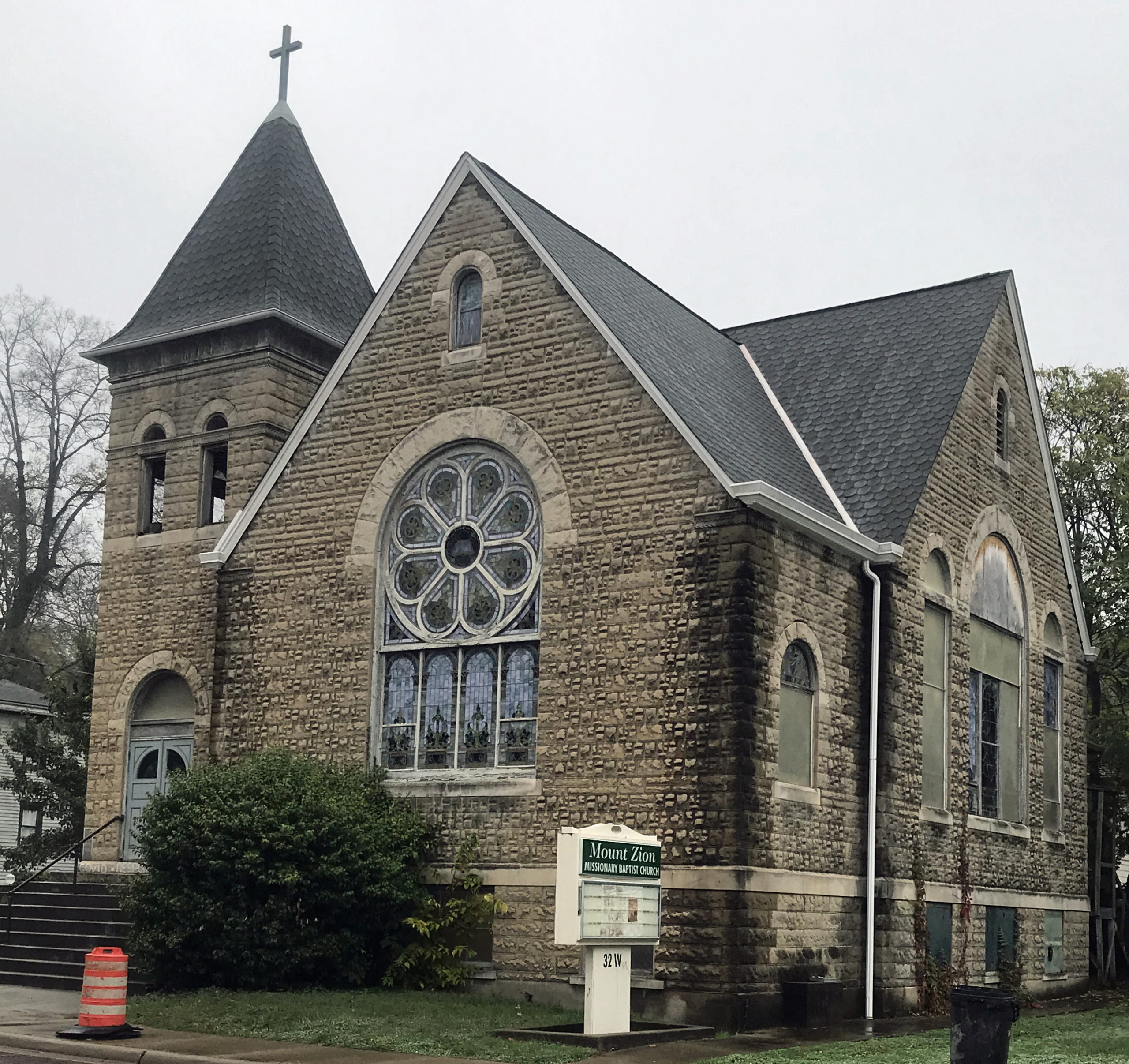
The Mount Zion Baptist Church in Athens, Ohio.
HDC recently worked with architect O.A. Spencer on the interior renovation of the Martin Luther King Jr. Performing and Cultural Arts Complex in Columbus, whose mission is to connect community through the arts by engaging central Ohio through performing, cultural and educational programs of high artistic merit that increase and disseminate knowledge regarding the vast and significant contributions of Black Americans to the culture and history of America and the world.
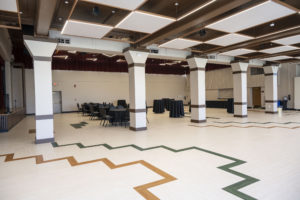
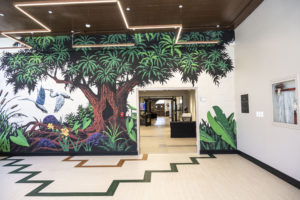
The main Auditorium with new flooring, ceiling and lights, looking through the updated column (left) and looking into the Lobby past the mural by artist Wali Neil (right). Photos by Shellee Fisher Photography.
And finally, HDC is very honored to have been awarded the project to prepare a Historic Structure Report of the Macedonia Missionary Baptist Church in Lawrence County, across the Ohio River from Huntington, West Virginia. The church was built c. 1849 and is one of the first Black churches constructed west of the Appalachian Mountains. The team is looking forward to starting work in August!
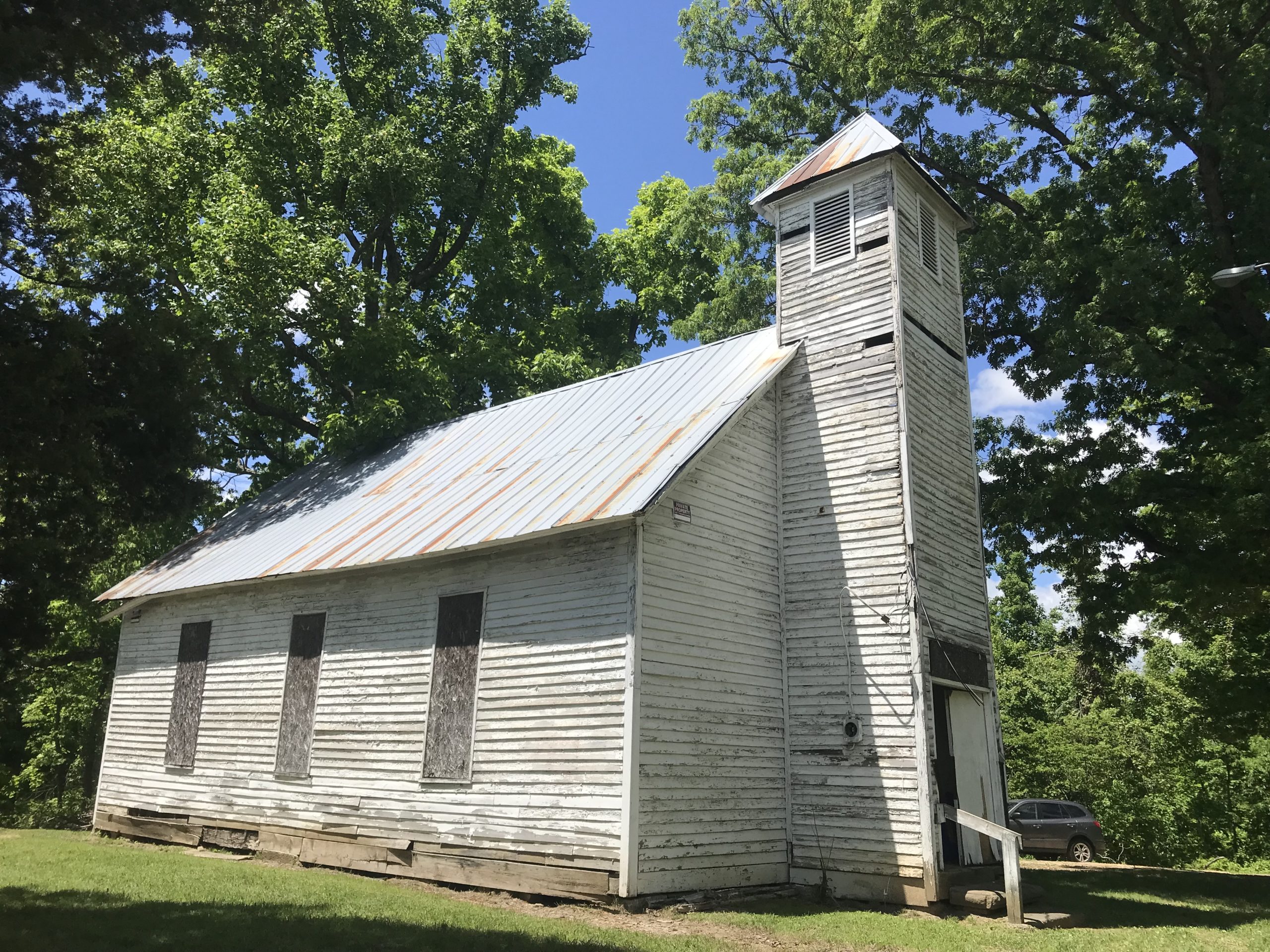
The Macedonia Missionary Baptist Church in South Point, Ohio.
Interesting Feature of a Water Meter and Backflow Preventer Building
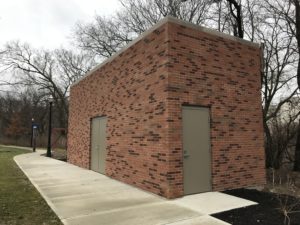
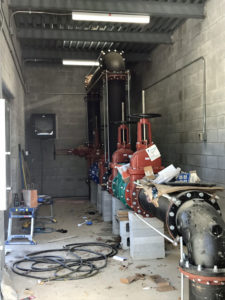
The southwest corner (left) and interior of the building while under construction (left)
HDC was on M-Engineering’s team to design two buildings to house new backflow preventers and water meters where Ohio State University’s water system connects with the City of Columbus’ infrastructure. Construction completion was delayed due to issues in delivering the specified brick, but the contractor was able to achieve substantial completion in December of 2021. The available infrastructure made traditional floor drains very expensive, so the team was charged with coming up with another solution if the equipment suffered a catastrophic failure and flooded the building.
Our solution: flap valves on the rear elevation that only open with sufficient water pressure!

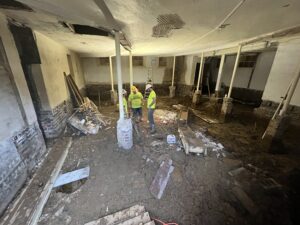
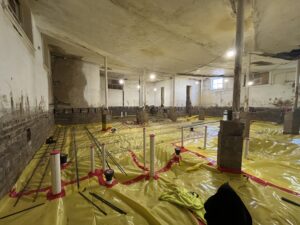
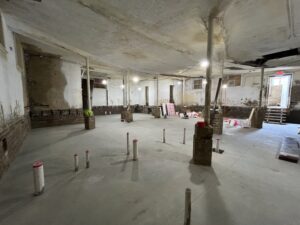
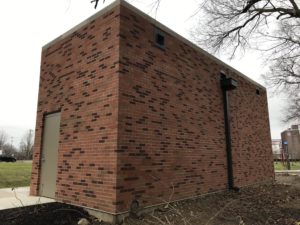 The southeast corner shows the round openings that are the flap valves that release water during a catastrophic failure
The southeast corner shows the round openings that are the flap valves that release water during a catastrophic failure